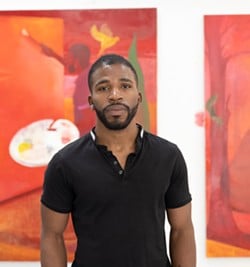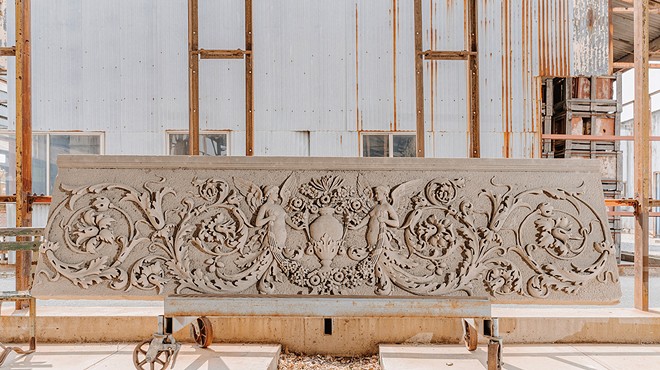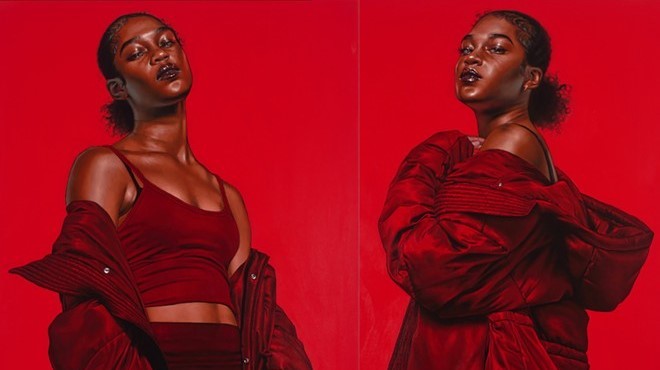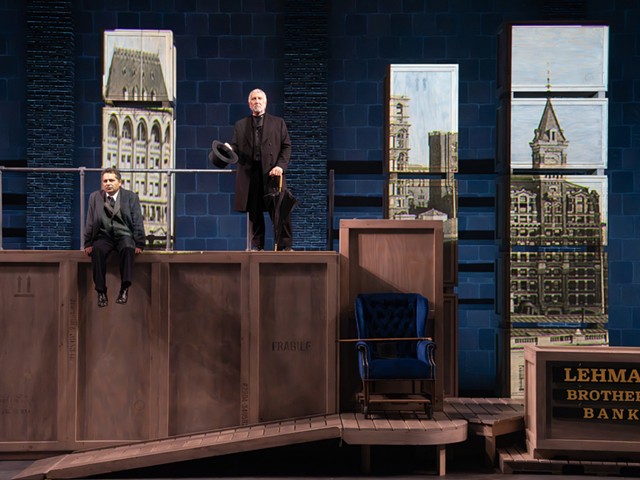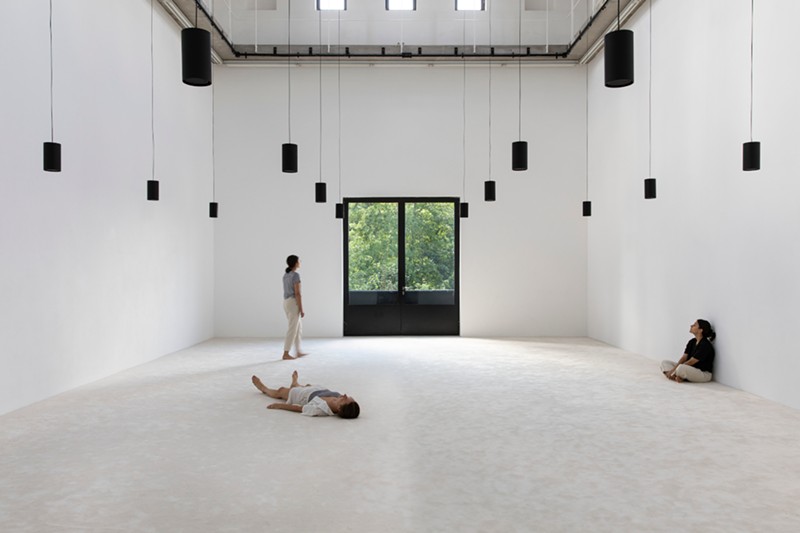
You don’t expect an art museum to be the place you take your shoes off and sink your toes into some lush carpeting.
But that’s exactly the setup for Hajra Waheed’s installation Hum, which opened as part of the Contemporary Art Museum St. Louis’ fall exhibits over the weekend.
Picture a small gallery space, all painted white; the floor is covered in white carpet. Black speakers hang from the ceiling. A gallery attendant directs you to store your shoes in a cubby and then step in. The sound, which you could hear approaching the installation, swells beneath each speaker. It’s a waving hum, musical and a bit ethereal yet powerful.
You stand or stroll around or sit down. Or maybe even lay down to listen and close your eyes. Yes, you are doing this in an art museum.
Part of Waheed’s solo exhibit, Hum is a satisfying and moving experience even without knowing its larger context — but that only elevates things. Waheed created the multi-channel composition in 2020 after students went on the march across Pakistan to protest cuts to the education budget. She visited Lahore in 2019 just as India implemented its Citizenship Amendment Act, which fast-tracked citizenship for certain religious minorities — but not Muslims.
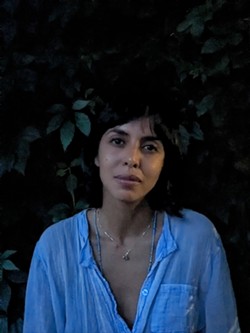
“These were movements that weren't in direct communication with one another, and yet students were taking to the streets across both sides of the border in India and in Pakistan reciting the same poetry and songs from revolutionary poets and political prisoners from a previous generation,” Waheed said at a preview event on Friday.
She returned home and dived into other freedom movements, especially that of Nudem Durak, a singer imprisoned in Turkey since 2015 for singing Kurdish folk songs. All of these different people using their voices made Waheed think about the power of sound — and that became Hum (“we” in Urdu). While it’s an entire room, it’s actually just one piece of Waheed’s solo exhibit, which includes sculpture, painting and works on paper as well as an immersive video, The Spiral, in CAM’s media room. Her works are unified by their focus on social movements and human struggle.
“But this exhibition is not just about one work, or just about one listening experience, or just about the collapse of state borders,” Waheed said. “It's also about the collapse of soft borders, between mediums, materiality between our various senses, and between ourselves to each other, and the natural world.”
Waheed’s exhibit is joined by two others: Las Vegas artist Justin Favela’s installation Ruta Madre and St. Louis-born Dominic Chambers’ exhibit Birthplace.
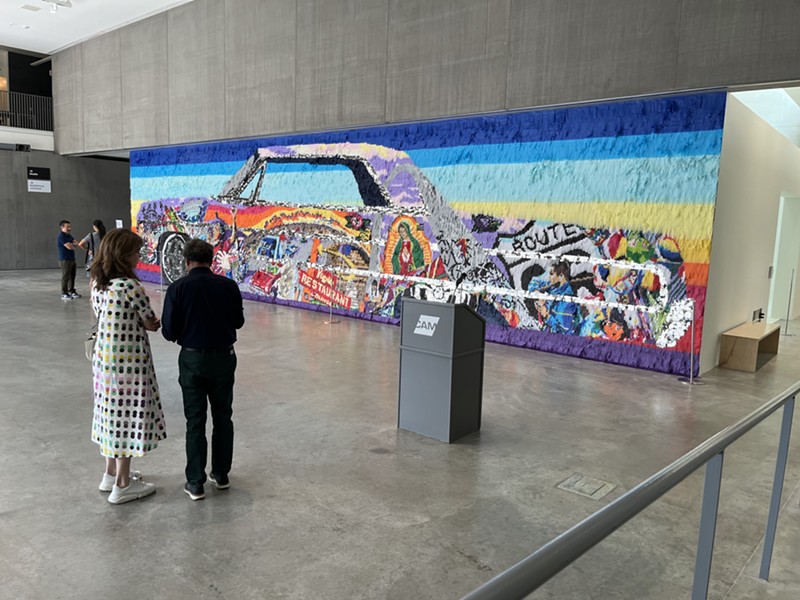
Visitors entering CAM’s events space can’t avoid coming across Favela’s work, nor would they want to. A large mural spanning the length of an entire wall, it is entirely made up of hand-cut, brightly colored tissue reminiscent of pinatas, which forms the outlines of a lowrider filled with a collage of references to Route 66. Ruta Madre, or Mother Road, evokes Favela’s heritage as Mexican and Guatemalan American and his parents’ time working on the Las Vegas strip. It examines LA’s Chicano lowrider culture, especially Gypsy Rose, a 1964 Chevy Impala painted by artist Jesse Valdez and named for burlesque star Gypsy Rose Lee. The piece also serves as a meditation on St. Louis’ place as the “Gateway to the West” as well as offers a bright riot of colors that’s undeniably fun to look at.
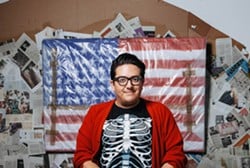
“It’s a representation of Route 66 and maybe some of the forgotten histories that are never really talked about,” Favela said at the preview, adding that he’d incorporated images of the Great Wall of Los Angeles mural, Arizona, Mexico, Oklahoma’s neon signs and St. Louis (including the Arch) before ending with the road’s termination in Chicago.
The mural is paired with a video that’s projected on the museum’s exterior facade at night. It depicts the Gypsy Rose and is part of CAM’s ongoing Street Views project, a series initiated in 2013 that displays large-scale videos on the museum’s facade as a way to increase accessibility to art.
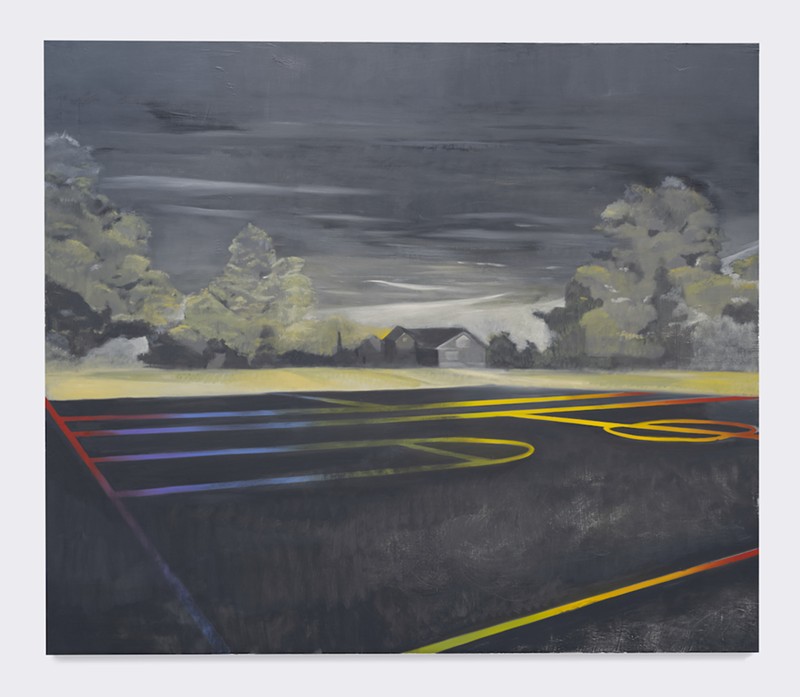
Dominic Chambers’ Birthplace is something of a “love letter to St. Louis,” as Wassan Al-Khudhairi put it during the preview. (The former Ferring Foundation chief curator, Al-Khudhairi worked on the show before leaving CAM in January.) Stepping into the gallery that holds Chambers’ oil paintings and sculpture, that feeling is instantly apparent from the subjects: a basketball court sporting rainbow court lines in Fairgrounds Park, a community college classroom painting in shades of red, a transparent playground sculpture, a library and a jubilant rendition of the Saint Louis Art Museum and Art Hill filled with people flying brightly colored kites.
At the preview, Chambers spoke about how the collection is intended to trace his path growing up in St. Louis, getting into the arts and falling “in love with creativity.”
“I wanted to commemorate this decade-long journey,” he said. “I wanted to reflect a lot more on the environments of places that I felt really enriched and saved my life.”
The three exhibits in CAM’s main space are joined by several from the museum’s community-focused programs. The Teen Museum Studies program selected and curated Ruth Reese’s Metamorphosis, which is composed of sculptures inspired by the Greek gods. The work from CAM’s teen studio program, New Art in the Neighborhood, is showcased in How to Change Yourself World, and LEAP Middle School Initiative's space is filled with the students’ collages, portraits and paintings of, naturally, pizza.
All exhibits will be open at CAM (3750 Washington Boulevard, 314-535-4660) through February 11 and are free to attend. The museum is open 10 a.m. to 5 p.m. Wednesday through Sunday. More info at camstl.org.
This story has been updated.
Email the author at [email protected] Subscribe to Riverfront Times newsletters.
Follow us: Apple News | Google News | NewsBreak | Reddit | Instagram | Facebook | Twitter | Or sign up for our RSS Feed

